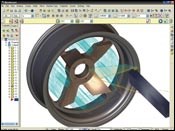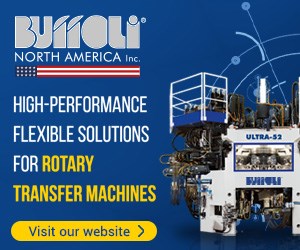Increased Control For Programmers
Here is a CAD/CAM system designed to be inviting to programmers, with a comfortable interface, integrated guides and a learning mode to facilitate operation and allow the shop to start creating tool paths—and turning parts—as quickly as possible.
Here is a CAD/CAM system designed to be inviting to programmers, with a comfortable interface, integrated guides and a learning mode to facilitate operation and allow the shop to start creating tool paths—and turning parts—as quickly as possible. The system appearance and functionality are customizable, including keyboard and mouse shortcuts that can be tailored to the programmer’s personal preferences. On top of that, the package offers tools to run almost any machine a shop might have.
Developed by CNC Software Inc. (Tolland, Connecticut), Mastercam is a Windows-based CAD/CAM package for two- through five-axis milling and turning; two- and four-axis wire EDM; 2D and 3D design, surface and solid modeling; artistic relief cutting, and 2D and 3D routing. These combined capabilities benefit both the shop owner and programmer because the programmer is not burdened with having to know several different products, or even different stand-alone modules of the same product. Programmers maintain absolute control over the tool paths, from lead in/out control for lathe work, to five-axis vector control for five-axis milling.
All of the software’s products, from turning and milling to wire and routing, run in a single interface. The product uses machine definitions to switch between machine types. So if a shop has a lathe and a wire machine on the shop floor, all CNC programming for the machines can be done in one part file. The programmer simply changes machine definitions when it is time to switch from one machine to another.
As the turning package of the next generation of Mastercam X CAD/CAM software, Mastercam X2 Lathe delivers new tool paths and techniques that offer faster programming to the shop. Saving programming time allows a shop to start turning parts sooner, boosting productivity and, therefore, the bottom line. With this software, multiple functions are consolidated within a single option, streamlining the number of programmer interactions. On-screen features such as the “smart” Ribbon Bar, Active Operations Manager and Quick Access History give the programmer the right tools at the right time, based on operations previously and currently being performed.
As geometry is created, it remains “live” until the programmer moves on to the next task. The programmer can modify geometry data points, adjust attributes and change entity types without affecting other entities in the part until complete. Programmers have complete control over all aspects of tool motion.
The software can use virtually any CAD source file and tracks new versions of these files, recognizes changes and helps the programmer update the tool paths accordingly. This file tracking allows the programmer to flag one file or many files if and when a change occurs. When file tracking detects that a newer version of an already programmed file exists, it will alert the programmer and provide the opportunity to launch change recognition. If change recognition is used, the original file will be compared to the new file, regardless of file type (solids, IGES, Step or any other file type supported by the software). The programmer will then see which machining operations were affected by the new revision, and make a decision whether or not to quickly update the tool path to reflect the newer version of the file.
The software allows programmers to store cutting information into libraries that can be used over and over again on parts similar to the original. By having previously used information readily available, programmers realize a significant time savings because parameters do not need to be defined again. If future jobs require changes to the parameters, though, full editing can still be done on previously defined operations. The package also supports verification of turning and live tooling (milling and drilling) using main spindle, subspindle, upper and lower turrets.
Overall, the software brings a solid complement of features and a high level of tool control, with an interface that is designed for ease of use. As an example, all parameter pages in the Lathe product have descriptive graphics to help programmers understand exactly what a specific function does. To allow continued product advancements, open-architecture design allows specialists around the world to create unique add-ins tailored for specific needs.
Read Next
Software Enables Transition To Medical Machining
When this company became a supplier to the orthopedics industry, in order to make the transition into medical machining, it began using PartMaker CAD/CAM software from PartMaker Inc. (Fort Washington, Pennsylvania) to program its CNC machines. The software has not only sped up programming but has also reduced setup time on Bell-Memphis’ machines.
Read MoreHow To (Better) Make a Micrometer
How does an inspection equipment manufacturer organize its factory floor? Join us as we explore the continuous improvement strategies and culture shifts The L.S. Starrett Co. is implementing across the over 500,000 square feet of its Athol, Massachusetts, headquarters.
Read MoreFinding the Right Tools for a Turning Shop
Xcelicut is a startup shop that has grown thanks to the right machines, cutting tools, grants and other resources.
Read More




















